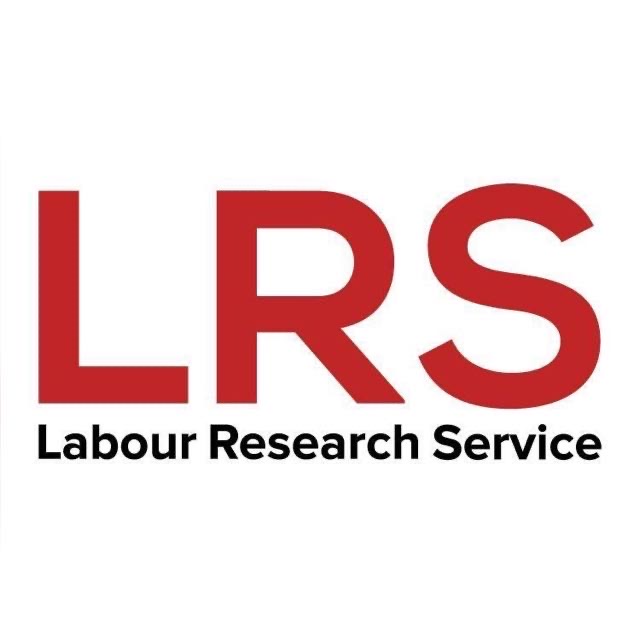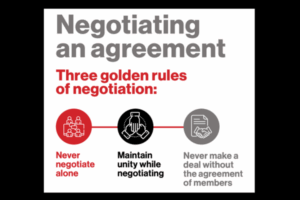2019-2020 period will see some key sectors involved in wage negotiations. George Mthethwa, Educator and Facilitator in the LRS Collective Bargaining Support Programme, gives his take on union bargaining in the current context.
What factors are likely to impact wage bargaining this year?
The bargaining power of trade unions in this period will be weakened by the unfavourable economic environment, which has affected the performance of industries the unions organise and resulted in job losses. The Consumer Price Index (CPI) will determine the wage increases that workers get, and it is currently at a low base. Whether companies can afford to grant or adhere to workers’ wage demands is the big question in the current economic environment. We’ve seen companies with huge wage bills laying off workers to reduce spending and increase profitability.
How do workers generally view centralised bargaining and the multi-year collective bargaining agreements?
The 2012 – 2013 strikes by mine and farmworkers indicated the extreme dissatisfaction with the duration of Collective Bargaining Agreements (CBAs). Generally, workers aren’t happy with three-year agreements because they lose out to inflation. The multi-year agreement makes workers poorer each year because often wages increases are linked to CPI plus 1% points in the same corresponding period. And there’s the danger of unions treating bargaining as an event rather than a process under a multi-year agreement regime. Such CBAs not only prevent workers from going on strike legally when there’s an issue, but they also stifle worker militancy and shop floor activity between bargaining rounds. Consequently, union officials and workers become estranged.
Which major wage negotiations will take place in 2019?
Most of the wage negotiations happen at a plant or company level. The major negotiations this year include the platinum and fibre and particle board and sawmilling sectors, which negotiate under the national bargaining council for the Wood and Paper Sector. Glass, fast-moving consumer goods, industrial chemical and pharmaceutical sectors, which negotiate under the national bargaining council for the Chemical Industry, are also among the main wage negotiations for 2019.
What demands can we expect from unions this year?
Unions are mostly like to negotiate around the following issues: implementation date of agreements, % wage increase, the minimum wage, night shift allowance, hours of work, leave maternity, family responsibility, paternity and compassionate leave, labour broking and housing allowance.
Can the demands be achieved in the current context?
The average wage increases obtained through collective bargaining in the previous settlements were stagnant at 8% from 2014 to 2018. In 2018, the median wage increase in all industries was 8%. If we take into account the average inflation rate of 4.7%, workers received a real median wage increase of 3.3%. The real wage increase attained in 2018 might look big, but it depends on how much (in monetary value) a worker earns.
The increases were eroded by inflation, particularly food and transport inflation. Low-income workers spend an estimated 29%-34% of their budget on food and 11%-12 of their budget on public transport, according to research done by Standard Bank in 2016.
The standard of living for many workers continues to deteriorate as the prices of goods and services increase monthly. Wages need to increase faster than the inflation rate today to protect the buying power of workers. Considering the high inflation, unions should garner for percentage increases of 9% (based on the SARB inflation rate forecast of 4.8% for 2019) and real increases of 4.2%.
Directors’ fees are ballooning across many sectors. Are the figures justified?
The various reasons given for the stratospheric figures include that CEOs are the most valuable employees in companies because they have scarce skills. Salarystaff.com indicated that the skills and responsibilities associated with the job of a CEO are extreme and the number of people who can fill the roles is limited. Thus, the market has determined that people with these skills are worth a lot of money.
For the CEOs to justify the exceptional salaries and bonuses awarded to them, companies must perform well themselves. But, the wage gap between bosses and the lowest-paid worker need to be looked at.
| Chief Executive Officer (CEO) | 2017 Salary (R millions) | 2017 remuneration (R millions) |
| Nampak | 7 028 250 00 | 23 026 922 |
| Sasol | 21 088 000 00 | 73 240 000 00 |
| Eskom | 9 914 000 00 | 15 042 000 000 |
| Telkom | 7 441 200 00 | 25 904 926 00 |
| Shoprite | 59 369 000 00 | 81 369 000 00 |
Why have we still not been able to close the wage gap?
Firstly, I don’t think that unions are paying attention to the issue of closing the wage gap. Secondly, those in senior positions, be it in public or private sectors have vested interest in preserving their huge salaries and are therefore not implementing section 27 of the Employment Equity Act (EEA). Section 27 (subsection 1) of the EEA stipulates that management must report the remuneration and benefits received in each occupational category and level in a company. Subsection (2) states that where disproportionate differential incomes are reflected in the reporting statement, the employer must take measures to progressively reduce the differentials. Section 27 of the EEA has been ignored or not used effectively to address the existing wage gap.
Are we likely to see disputes and major industrial action this year?
We will experience disputes in 2019, but it’s unlikely there will be big strikes. The strikes we’ll see will mainly be at the company level. Unions and workers need to prepare well for that eventuality.







